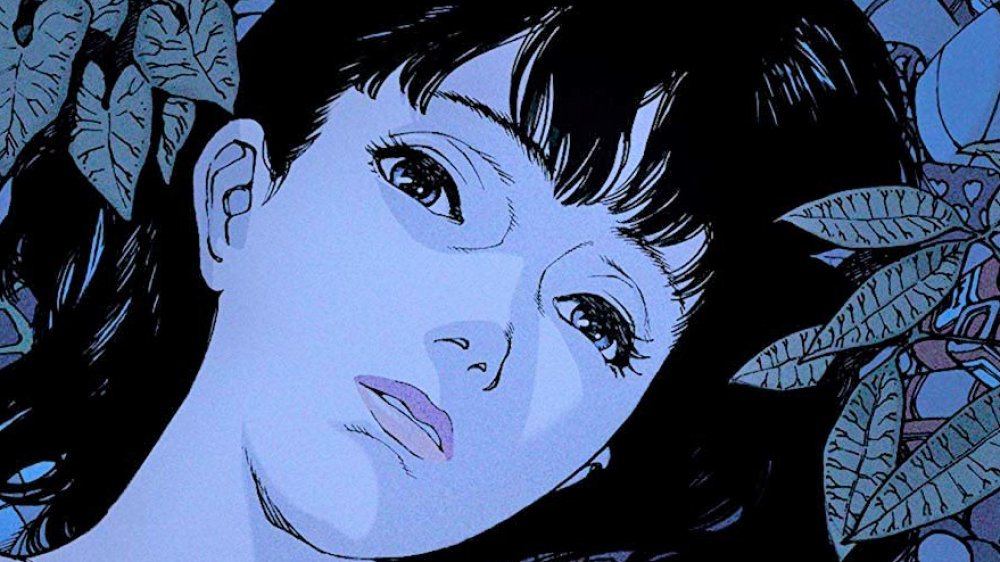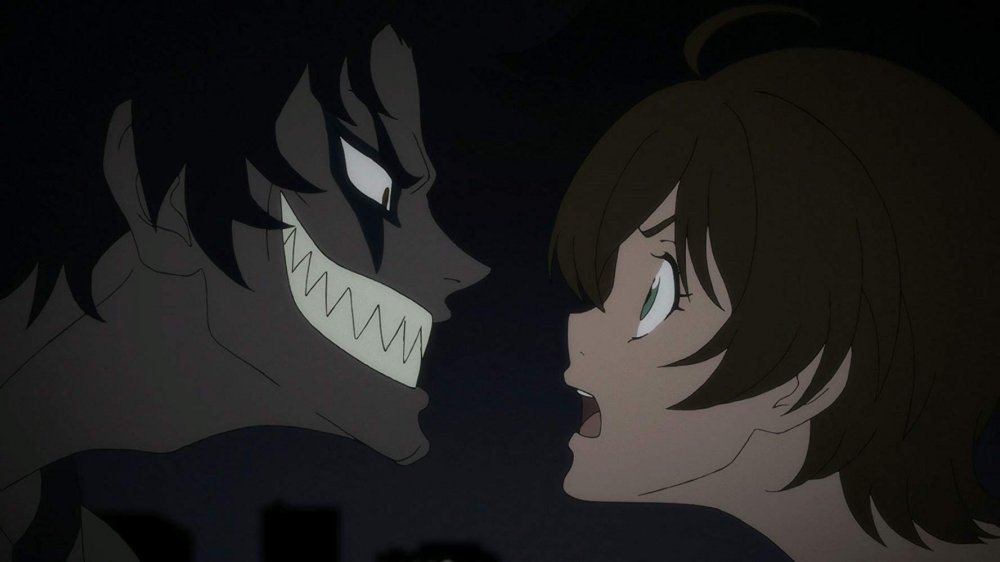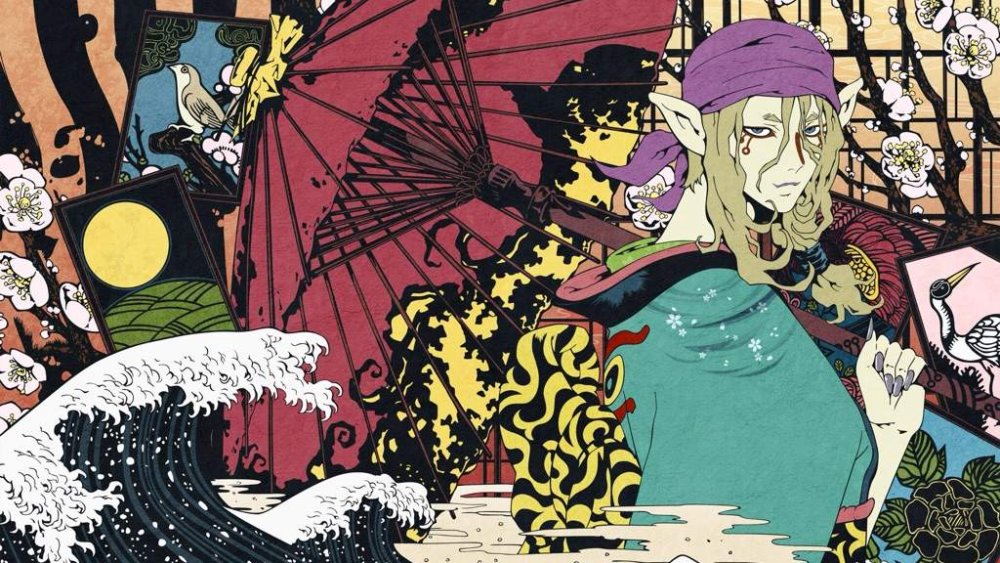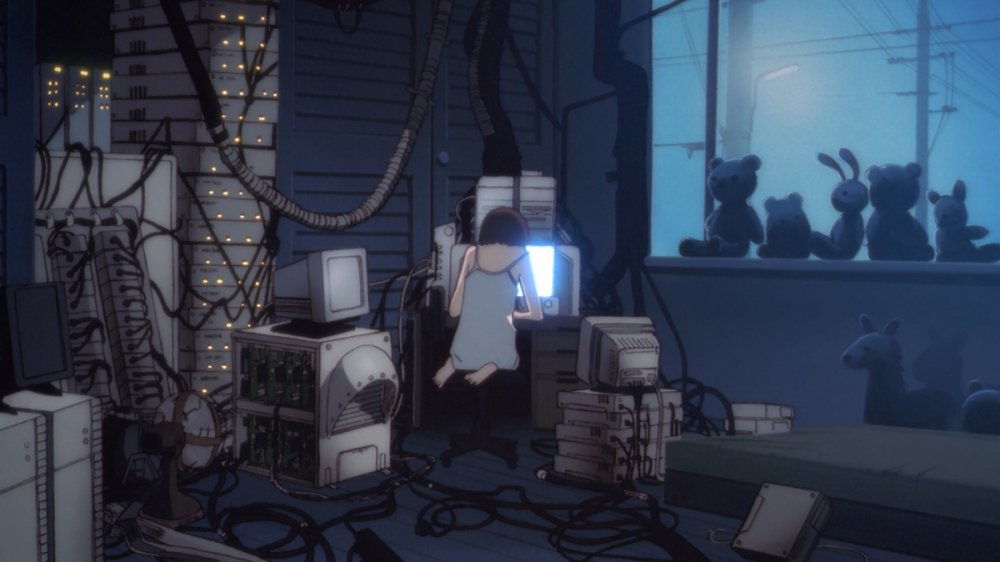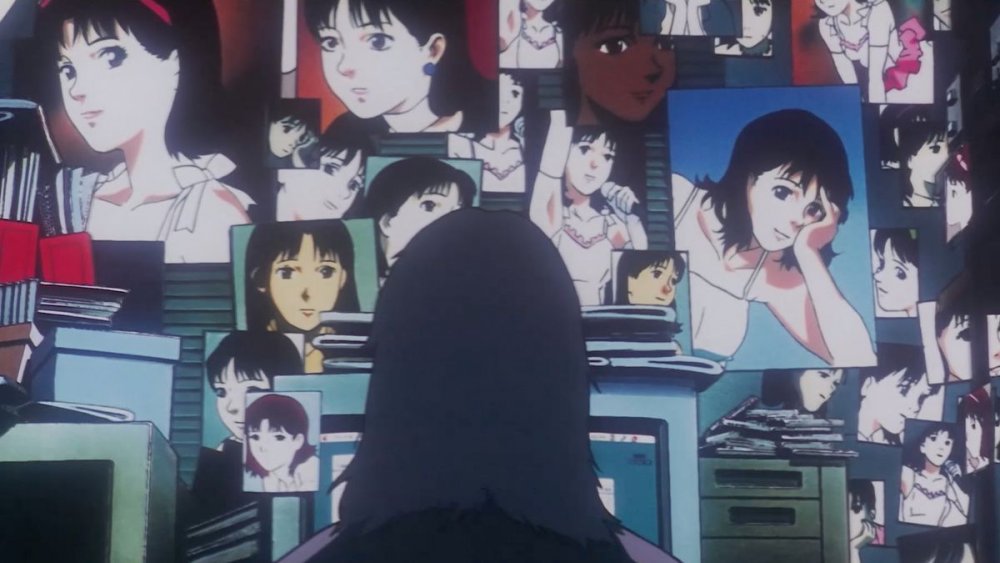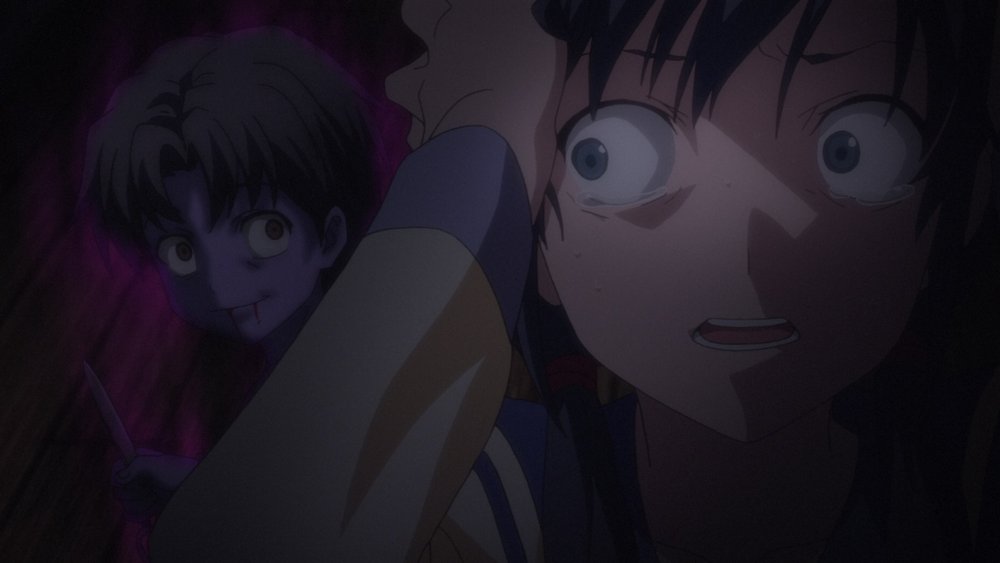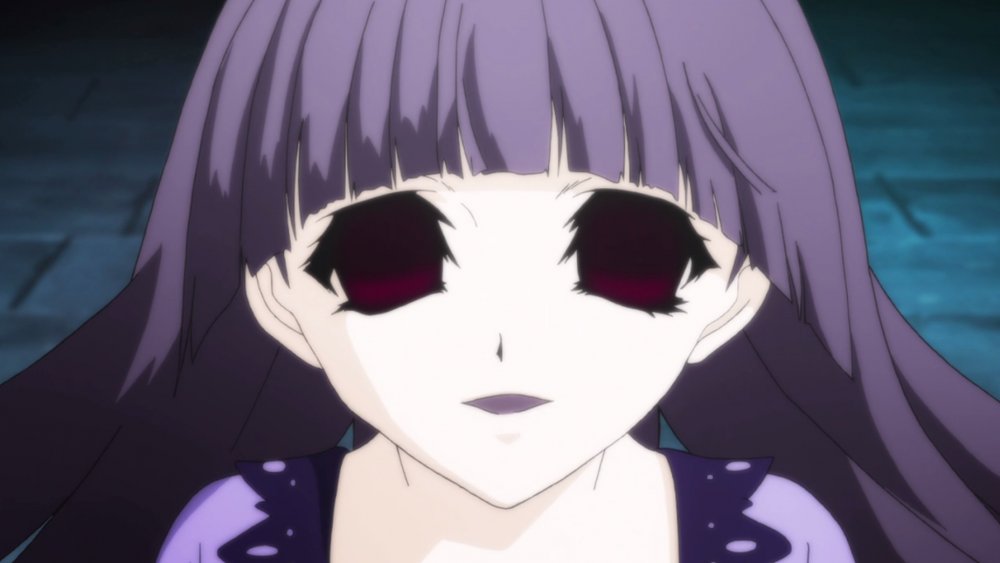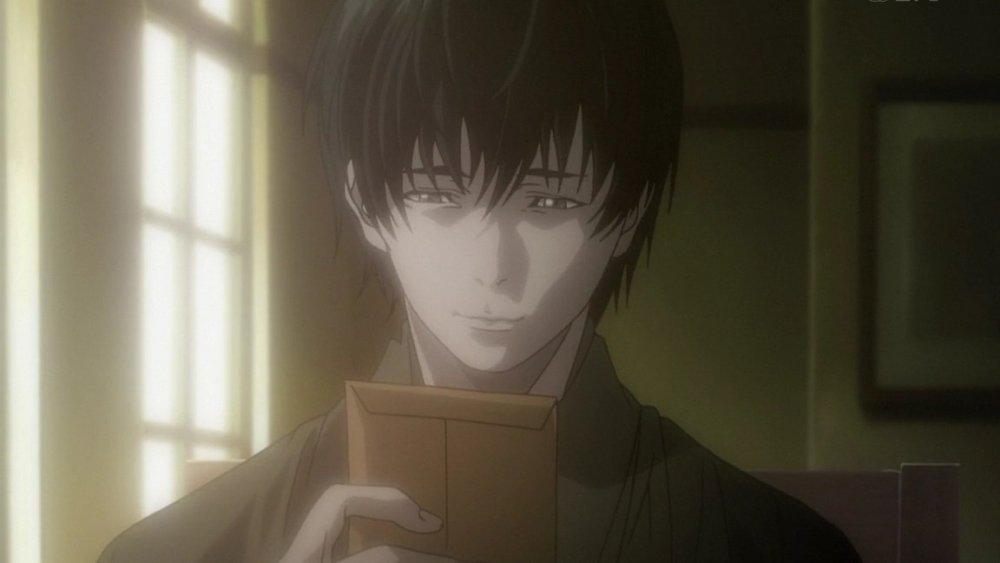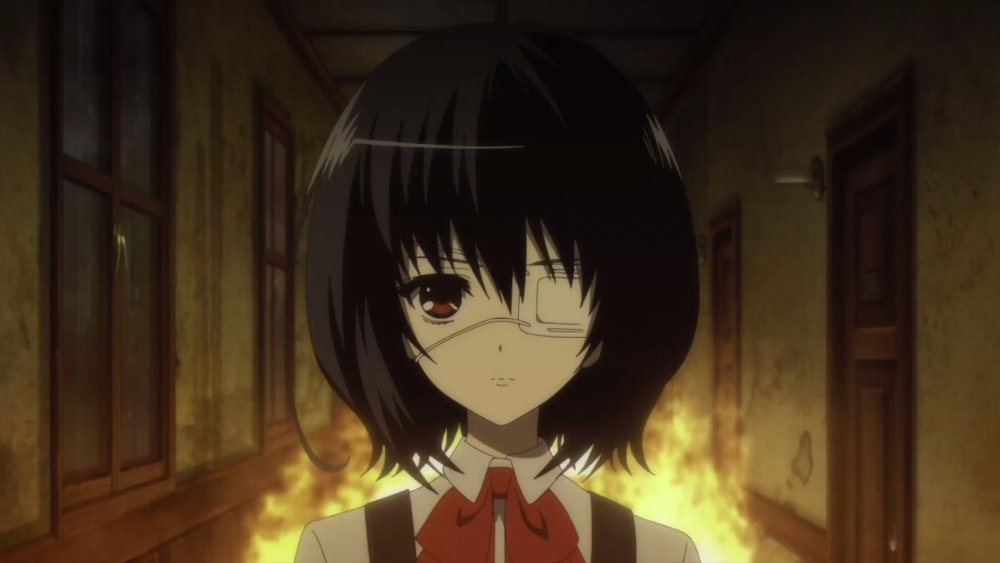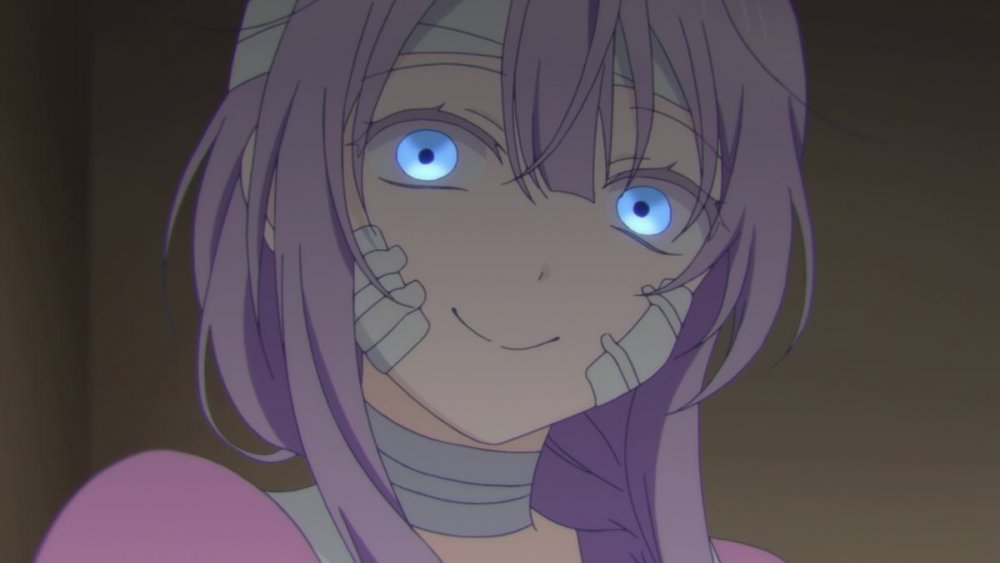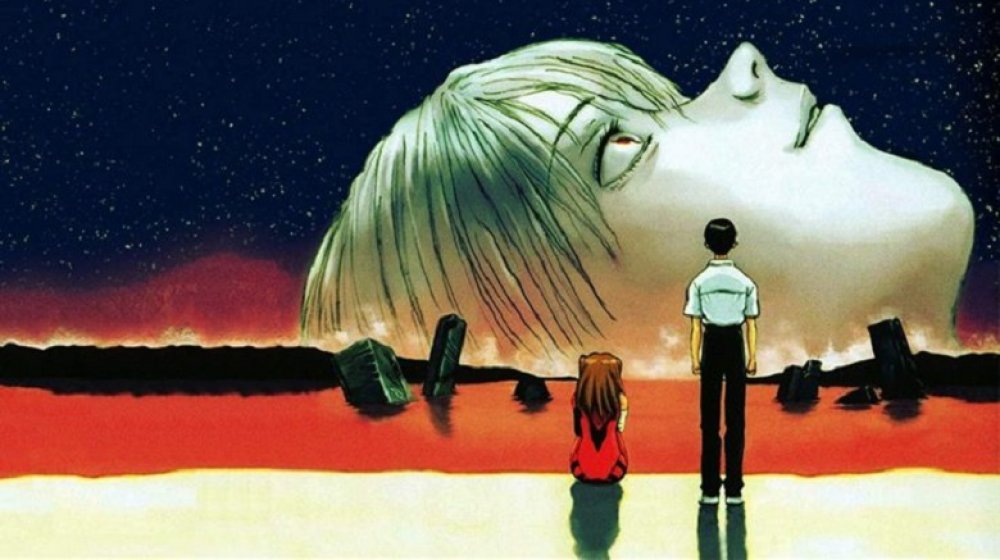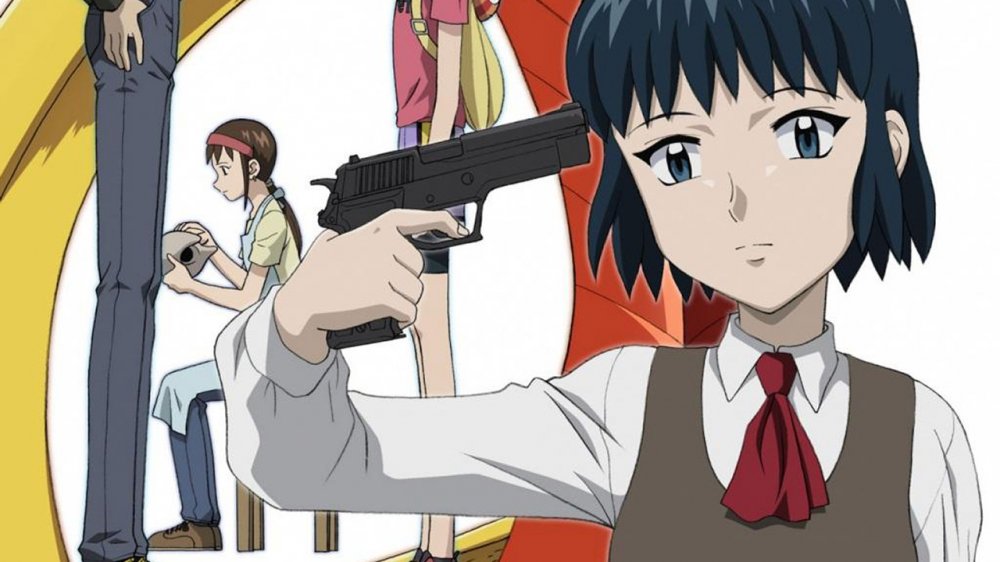The Most Terrifying Anime You Can Watch
One of the most important things to remember about anime is that it's a medium and not a genre. Zippy action shows like Naruto, melancholy space Westerns like Cowboy Bebop, and road stories like Michiko to Hatchin all fall under the umbrella of anime, but lumping them together in terms of storytelling is like claiming The Godfather and Superbabies: Baby Geniuses 2 are essentially doing the same thing. In other words, there's a lot going in anime ... including some pretty gruesome, terrifying stuff.
Enter horror anime, as much a part of the artform as Pokemon and magical girls. And yeah, even though it's animated, it can get truly, deeply nasty. But armed with this knowledge, the genre can still be intimidating to explore. Which adaptations of classic stories are the best? Does anime delve more into psychological horror or out-and-out gore fests? What should the discerning viewer prioritize, and what isn't worth their time? Let us help you find the deepest, darkest reaches of horror anime with this list of the most spine-tingling work out there. From tales of malevolent spirits to portraits of people shattered into inhumanity, these are most terrifying anime you can watch.
Devilman Crybaby gets incredibly grisly
Go Nagai's seminal Devilman manga has been adapted more than once, but 2018's Devilman Crybaby might just be the most terrifying adaptation of them all. Directed by Masaaki Yuasa, this take on the tale hews closer to the manga than others and incorporates Yuasa's trademark character focus, resulting in a story as emotionally potent as it is horrifying. Akira and Ryo, friends since childhood, are the series' central figures, the latter convincing the former to become the titular Devilman to fight off an ancient race of demons. Yet all is not as it seems, from Akira's transformation to Ryo's true objectives, and what unfolds manages to shock Devilman newbies and diehard fans alike.
Death, disfigurement, violence, and all the other tools in any horror story's belt are all employed here. The series penultimate episode, "Go to Hell, You Mortals," is an absolute parade of grotesqueries, wherein beloved characters are mutilated, murdered, and reduced to desecrated body parts. But Devilman Crybaby's true nightmare is the gulf that opens between Akira and Ryo, despite their careful planning, best intentions, and literally divine power. This isn't just a horror story about man's inhumanity to man but about the destruction of love itself at the hands of selfishness and cruelty. Devilman Crybaby might involve angels and demons, but at its core, it's a nightmarish tale of our own human weakness. There's no horror story truer, and thus more frightening, than that.
Mononoke is a beautiful yet absolutely terrifying anime
Horror isn't typically considered a beautiful genre, at least by any conventional definition of the term. But Mononoke is a gorgeous series by anyone's estimation ... and somehow simultaneously a deeply chilling work of horror. Consisting of 12 episodes, it tells the story of a nameless medicine seller who travels across feudal Japan in search of the titular spirits. These mononoke can't be easily slain, however. The medicine seller must grasp the form they take, why they took it, and the truth of their situation before he can dispatch them.
What results is an anime of uncommon psychological depth. Human nature is the source of all that lurks in the night in Mononoke, and as such, the lines between good and bad are profoundly blurred. The series visuals, which resemble 2D paper cut-outs, intensify this horizontal approach to horror. There's no locale that looks "normal," and as such, terror creeps in with rare subtlety. Everything from ukiyo-e woodblocks to Art Nouveau is incorporated into Mononoke's style, and you can't help but marvel at its aesthetic flourishes as a grisly scene unfolds. But that's the point of the anime. Beauty and dread aren't really that different. And therein lies Mononoke's soul, as decadent as it is sinister, and all the better for it.
Serial Experiments Lain is the perfect blend of sci-fi and horror
The literal events of Serial Experiments Lain are as follows. Lain Iwakura, a 14-year-old girl living in suburban Japan, has her quiet life upended by an email from a dead student. The student claims not to have truly died but instead abandoned her physical form to live within "the Wired." That's 1998's fairly accurate vision of an internet so powerful and pervasive that it's become inextricable from any aspect of human life. Over the course of 13 tense episodes, Lain goes from introverted girlhood to outright omnipotence in a world where the boundary between the material and the virtual has frayed so dramatically as to be nonexistent.
Serial Experiments Lain is, first and foremost, a work of science fiction, but it commits so wholeheartedly to exploring the possibilities of artificial intelligence that it becomes a work of profound horror. Reality, Lain argues, is a thing people agree on, and if that consensus can be manipulated, it will be. Lain and the audience alike are granted no quarter as the anime delves into the nature of a world ruled by inhuman intelligence whose omniscience and omnipotence can't be stopped. Every time Lain sits at her desk, her slim figure dwarfed by the reef of screens, the viewer understands on a primal level that the world is changing in a way we aren't prepared for. Over 20 years after the anime's debut, it's never been so relevant or so terrifying.
Perfect Blue is a terrifying anime with incredible influence
Satoshi Kon's Perfect Blue is among the most influential anime to ever exist. Madonna incorporated clips of it into her 2001 Drowned World tour. American director Darren Aronofsky is a vocal fan, having remade a scene from Perfect Blue in Requiem for a Dream. Why this far-flung influence? Well, the answer is simple. Perfect Blue is a masterpiece of dread.
Mima, our protagonist, has just left the pop idol group that made her famous to become a serious actress. But as threatening faxes pour in and a website entitled "Mima's Room" — containing diary entries purportedly written by Mima herself — gains momentum, Mima realizes not all is as it seems ... including her own reality. The events of Perfect Blue are themselves horrific, but it's Kon's dizzying approach to their portrayal that make Perfect Blue the nightmare it's revered as. Frantic cuts disorient the viewer, odd scene changes mimic Mima's increasingly disordered mind, and mirrors, screens, and windows refract a world that has lost its meaning. Mima descends into an underworld of illusion, and the viewer has only her perspective to rely upon, one that draws into question the reliability of reality itself. There's a culprit held to account at the end of Perfect Blue, but their actions are only part of the story. The real terror, in Mima's mind and the viewer's, lies in her world's collapse — sudden, complete, and impossible to forget.
Things get super dark in Corpse Party
Corpse Party's long, bloody history began in 1996 as a video game created by independent developer Makoto Kedoin. Today, the Corpse Party franchise encompasses theme park attractions, manga spin-offs, live-action films, and drama CDs, and it shows no signs of losing relevance any time soon.
Just what, you might ask, makes this property so popular? Your questions are answered in Corpse Party: Tortured Souls, 2013's anime adaptation of the beloved series. Years before the series' beginning, Heavenly Host Elementary School was the site of a series of brutal kidnappings and murders. Though it was razed, a new high school was built in its place and filled with teenagers who don't understand the malevolent psychic energy that surrounds them, waiting for a way in. Naturally, this evil appears in the form of a superficially silly friendship charm that sends our heroes to the nightmarish plane on which Heavenly Host Elementary School still exists and from which they are now driven to escape.
Corpse Party is a brutal, bloody series that revels in the macabre. It's got spilled innards, severed tongues, and bifurcated bodies. If you can stomach this, it's a satisfyingly savage tale of the past's long shadows and the youth forced to grow up within them. The trauma they've inherited isn't their own, but as is the case in every horror story about teens uncovering long-kept secrets, it's become their job to process it in bloody, breathtaking style.
Shiki is a tragic tale about monsters and cruelty
Shiki, which chronicles the destruction of a small town by the inhuman monsters that live in the mansion on the town's outskirts, is a classic vampire story. The shiki are hypnotic, undying figures of inhuman drives, as utterly unknowable as they are eerily similar to everyday people. Those who are murdered and reborn as shiki see their lives as humans warped into bizarre personalities. Megumi, the first to die, goes from being a small-town girl with big-city dreams to being an undead killer whose disdain for her hometown gains murderous new dimension. But what makes Shiki a truly memorable work of horror is the truth of the shiki themselves. Their attempt to destroy the town is driven by a desire to make a peaceful home for themselves. Sunako, their leader, understands this intimately, having been turned as a young girl and cast out of the world she'd known. The shiki's actions are vile, but the anime never shies from the truth of their tragic situation. They exist, they must feed, and they're trying to find a way to do both with a minimum of cruelty. The impossibility of reconciling these things is what makes Shiki such a resonant horror story.
No Longer Human is terrifying because it's so relatable
No Longer Human began as a 1948 novel by legendary author Osamu Dazai. Told through notebooks left by the story's protagonist, Oba Yozo, it's a desolate account of one man's lifelong failure to connect with others, and it's a story as powerful as it is challenging to adapt. Yet 2009 saw that accomplished when Aoi Bungaku — a 12-episode anime series featuring adaptations of lauded Japanese literature — devoted the first four episodes of its run to animating No Longer Human.
Though Aoi Bungaku takes liberties with its source material regarding timeline, point of view, and certain character details, the core conceit remains intact. Yozo, for whatever reason, feels utterly detached from everything that makes one truly human. Watching him attempt to connect, fail, recede, and lash out is a truly harrowing portrait of brokenness, made all the more frightening for its relatability. His life might not be anything like the viewer's, but as in the original novel, almost anyone can see a little of themselves in Yozo. Those moments where you laugh to keep the peace, do something just because everyone else is doing it, or feel nothing when you know you're meant to be moved — that's what No Longer Human forces us to view through Yozo's inhumanity. In this, he's far more human than he realizes, and that's the most terrifying thing of all.
Another is a devastating anime all about death
Years before the events of Another, a student in Yomiyama Middle School's Class 3-3 suddenly died. His classmates, reeling with grief, pretended as though he hadn't died at all, to the point of bringing his desk to their graduation. This culminated in the deceased classmate's mysterious appearance in the class's graduation photo and an ironclad bond between Class 3-3 and death. Years later, a boy named Koichi begins his time in Class 3-3 late, due to illness, and he discovers that something is amiss. Misaki, a quiet classmate, is entirely ignored by the other students. An odd atmosphere pervades the classroom. And then, one by one, Koichi's peers start dying. Misaki is the only one who isn't surprised by these tragedies, and only she understands how to stop them.
Another is a horror story, but beyond that, it's a profoundly sad work about childhood's end. Class 3-3, too young to remain ignorant of life's cruelties yet too young to accept them with grace, are so utterly wrecked by their first encounter with death as to doom themselves across generations. The anime's moments of violence, terror, and dread make it the sort of nightmare any horror fan can enjoy, but their true power lies beyond brief thrills. They're the pillars of the story's central tragedy. Class 3-3 is locked within a cycle of grief that can only be broken by that most crucial thing: acceptance. Their inability to do so is the series' truest nightmare of all.
Happy Sugar Life isn't really all that happy
Ah, to be young and in love. Happy Sugar Life extols the virtues of this sublime state, only to confront the viewer with the reality of its starring couple — Satou, a teenage girl with a hard-luck past, and Shio, the kind-hearted eight-year-old that Satou kidnapped and keeps locked in her apartment. Satou will do anything to conceal and protect the "happy sugar life" she believes she's created for her and Shio, whether that means waitressing, blackmail, or murder. Theirs is a love of pristine purity, according to Satou, and there's no evil she won't commit in her devotion to its preservation.
Happy Sugar Life never glories in the details of Satou's grisliest acts. This anime chills the viewer with a vision of just how people can twist each other into monsters. Satou, exposed to only the most dysfunctional relationship models as a child, truly believes that kidnapping a child is excusable in the name of true love and that, in fact, what she feels is true love and not demented covetousness. But it is Shio's character arc that truly terrifies. Having known only abandonment and violence so far in her short life, she can't recognize Satou for the monster she is, nor identify herself as an individual beyond what Satou projects upon her. What results is a story about how entirely people can destroy the ones they love and just how invisible the process can be.
The End of Evangelion is a powerful, apocalyptic tale
An alternative ending to Neon Genesis Evangelion's controversial final episode, The End of Evangelion bears witness to the apocalypse. NERV, the paramilitary group responsible for the Evangelion units that our heroes pilot, is being used by its commander, Gendo Ikari, to hasten the end of the world. He succeeds, though not as he would've liked, and 85 grueling minutes chronicle how swiftly things spiral out of control.
Prickly Asuka is disemboweled. Quiet Rei absorbs Biblical power and returns all of humanity to a single consciousness. Protagonist Shinji does ultimately survive by affirming the worth of human life, yet the story ends on a shot of him and Asuka alone in the ruined world. There's an implication here that humanity might reform, but in that moment, he attempts to strangle Asuka to death against a horizon that's interrupted by Rei's enormous, rotting head. When he fails, Asuka mutters the last line of the film, "Kimochi warui," which is most often translated as, "I feel sick," or, "How disgusting." The End of Evangelion is possibly about hope, but mostly, it's about the venality of the world, the corruption of the powerful, and the inevitability of decay. It will occasionally distract from its vision of existential despair, but only with a scene of literal physical decomposition, teenage depravity, or the crucifixion of the series' coolest-looking robot. It's not just a movie about the end of the world. It's about the death of hope, progress, and altruism.
Shadow Star is seriously messed up anime
Shadow Star begins as a tale about a pigtailed everygirl and her mysterious alien friend, Hoshimaru. You might be thinking that this sounds like Digimon or Cardcaptor Sakura, a story of youngsters and their unlikely companions saving the world with their superpowered bond. This is very much by design. Hoshimaru is adorable, Shiina is a cheery charmer, and the opening theme features purposefully childlike drawings of the cast alongside their alien friends. It's sweet, it's bright, and it features a lot of harmonica.
Somehow, Shadow Star begins this way and then ends, 13 episodes later, as one of the most graphically disturbing anime series of the 2000s. Characters are beheaded, impaled, forced to eat maggots, have their severed heads mounted on dolls, and experience a whole host of other grisly things too graphic to be described. Shadow Star is, in the end, a series that absolutely glories in the worst things people can do to each other, with its mysterious creatures bringing brutal violence into the mix as often as they do care and consideration. Watching it is dizzying, as moments of grotesque horror are often juxtaposed against scenes of placid daily life, to say nothing of Shiina, whose blue-haired perkiness becomes more and more discordant as the series darkens. Its abrupt ending only makes the series more upsetting. Shadow Star charms, horrifies, and then, somewhat inexplicably, ends. The viewer is left to absorb all that unfolded on screen with little in the way of explanation and definitely nothing resembling comfort.
